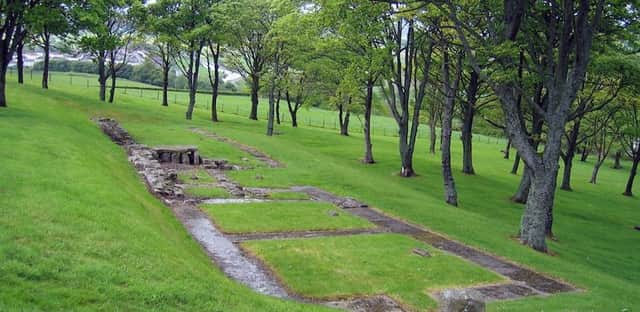Antonine Wall is part of first UNESCO digital trail


Frontiers of the Roman Empire: Antonine Wall UNESCO World Heritage Site is one of the 13 place-based designations included in Scotland’s online UNESCO map.
The Antonine Wall marked the final frontier of the Roman Empire in the north. This mighty fortification was built by Emperor Pius in 142 AD, one of the most ambitious constructions of the ancient world.
Advertisement
Hide AdAdvertisement
Hide AdThe UNESCO map includes World Heritage Sites, biosphere reserves, global geoparks and creative cities.
The dedicated digital trail brings together some of the country’s most iconic, diverse and significant sites, and aims to take visitors on a cultural journey.
Designed specifically to support ambitions to make Scotland a world-leading responsible tourism destination, Scotland’s UNESCO Trail encourages visitors to stay longer, visit all year round, explore more widely and, in turn, contribute to the sustainable quality of life of those communities surrounding the designated sites.
The digital trail – available at www.visitscotland.com/unesco-trail – showcases the breadth of culturally astounding UNESCO designations on offer across Scotland, which cover a fifth of its land mass, providing information and inspiration to visitors across the world.
Advertisement
Hide AdAdvertisement
Hide AdIt also celebrates and prioritises businesses and communities that are committed to responsible tourism business practices and promotes sustainable travel options.
Scotland is the first nation in the world to create such an initiative.
Developed through a unique partnership between VisitScotland, the Scottish Government, the UK National Commission for UNESCO, Historic Environment Scotland, NatureScot, the National Trust for Scotland and Scotland’s 13 UNESCO designations, the project has received £360,000 funding from Holyrood to support the strategy for the sustainable recovery of Scottish tourism.
Tourism Minister Ivan McKee officially launched the trail on Friday.
Advertisement
Hide AdAdvertisement
Hide AdMr McKee said: “Scotland has always been a pioneering nation and I’m pleased to see we’re leading the way with the world’s first UNESCO digital trail.”
“Tourism is key to Scotland’s economy and as we begin to recover from the pandemic, this collaboration between the Scottish Government, VisitScotland, NatureScot and UNESCO could not be more timely.
“Supported by £360,000 of Scottish Government funding, the UNESCO Trail will help to attract and welcome both domestic and international visitors again, by showcasing Scotland’s unique cultural heritage and many UNESCO sites.
“As we approach COP26, I’m pleased to see that the UNESCO trail has sustainability at its core and will help visitors make responsible and sustainable choices by highlighting green accredited businesses and promoting environmentally friendly travel.”
Advertisement
Hide AdAdvertisement
Hide AdThe full list of designations included in Scotland’s UNESCO Trail comprises: the Galloway and Southern Ayrshire UNESCO Biosphere, Wester Ross UNESCO Biosphere, Dundee UNESCO City of Design, Edinburgh UNESCO City of Literature, Glasgow UNESCO City of Music, Shetland UNESCO Global Geopark, North West Highlands UNESCO Global Geopark, the Forth Bridge UNESCO World Heritage Site, Frontiers of the Roman Empire: Antonine Wall UNESCO World Heritage Site, New Lanark UNESCO World Heritage Site, Heart of Neolithic Orkney UNESCO World Heritage Site, Old and New Towns of Edinburgh UNESCO World Heritage Site, St Kilda World Heritage Site.